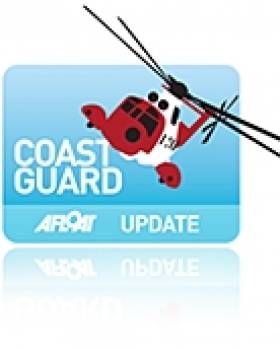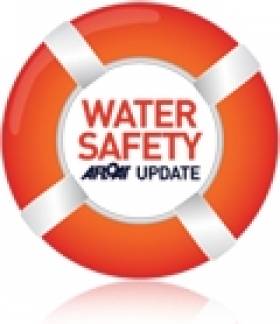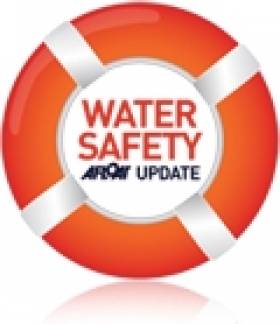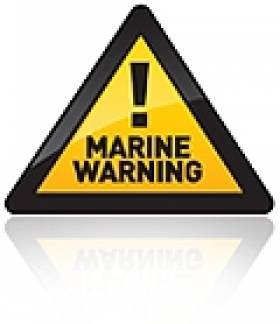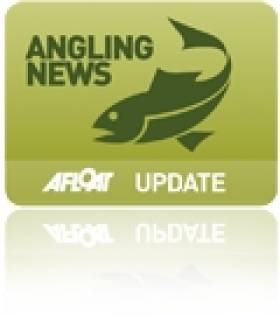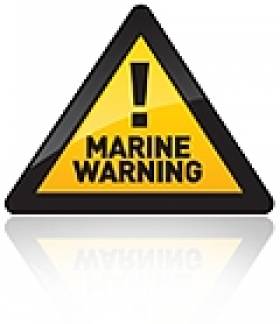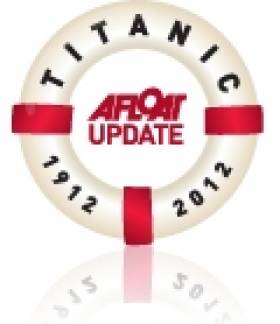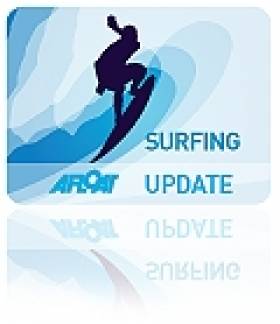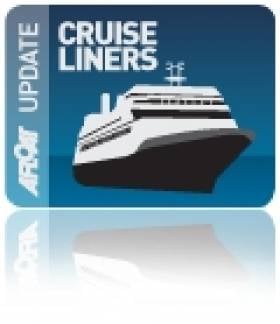Displaying items by tag: Safety
Howth Coast Guard Reviews A Busy 2012
#Coastguard - Howth Coast Guard responded to 53 calls throughout 2012, with its 25 volunteers clocking up more than 4,000 man hours.
In its review of the year, the north Dublin unit of the Irish Coast Guard noted that while its safety boat Grainne was dispatched to fewer calls on the water, there was an increased number of cliff and beach incidents to attend to, particularly in the Clontarf and Dollymount areas.
Howth also became one of the first search and rescue teams in the State to avail of the Irish Coast Guard's new side scan sonar.
As previously reported on Afloat.ie, the coastguard saved 161 lives throughout a busy 2012 that saw the network respond to almost 2,000 call-outs nationwide.
And 2013 so far has been off to a busy start, marked by a dramatic cliffside rescue in Donegal on New Year's Day.
Water Safety Survival Guide this Christmas
#watersafety – The Christmas season is a time when thousands of people around the country must take extra care when taking part in sponsored swims in support of many charitable causes. Thousands more are at risk when taking walks by rivers, lakes and shorelines and even more are lulled into a false sense of security when visiting relatives living close to water hazards such as slurry pits, exposed drains and canals. Irish Water Safety has compiled a Christmas survival guide to staying safe around water at Christmas time.
The full moon on Friday 28th December will result in a higher tidal range and with it an increased risk of people becoming stranded whilst walking with family and friends over areas of beach and rocks not normally exposed during standard tides.
Christmas and New Year Swims:
Get in, Get out, warm up.
Christmas day charity swimmers occasionally take chances beyond what is acceptably safe, finding themselves left without sufficient strength to climb out of the water due to the cold.
Cold winter waters can cause "cold shock" and hypothermia can set in within minutes, overwhelming the fittest of swimmers. If sea conditions deteriorate then the charity swim should be cancelled. If you see a person in difficulties do not attempt a rescue for which you are not trained. Make use of any nearby rescue equipment such as a ringbuoy and in the event of an emergency call the emergency services on 999 or 112. No alcohol should be taken before the swim.
Christmas Charity Swims
The Christmas season in Ireland is a time when thousands of people around the country traditionally run sponsored swims in support of many charitable causes.
People organising these swims on Christmas Day, St. Stephen's Day or New Year's Day should ensure that they provide comprehensive details of each event to the Irish Coast Guard and local Gardai.
Each event should have a Safety Officer appointed, who will advise those concerned on safety and have the ultimate responsibility for making decisions in relation to the swim being on or off on the day.
If the seas are rough and weather deteriorates, they should defer the event to a more suitable day without question - do not take a chance on running the event.
Many participants will not have swam since the summer and the temperature of the water has now dropped considerably. It is a fallacy that alcohol will keep you warm when entering the water; in fact it has the reverse effect and could kill you. Irish Water Safety strongly recommend that no alcohol be taken either before the swim or after the swim and also remind people that they may be in breach of the drink driving laws when driving to or from the event.
Cold water can cause cold shock and hypothermia in minutes, because the temperature of the water at this time of year will be below 50F/10C.
Elderly people should be mindful that steps leading into the water might be dangerous due to the increased growth of algae in wintertime.
Swimmers' remaining in the water for extended periods in a gesture of bravado is not acceptable. The message is "Get In, Get Out and Warm Up".
LIFESAVING WATER SAFETY POINTS THIS CHRISTMAS:
Supervise children at all times, but especially if you are on holidays abroad this Christmas.
Never swim alone in a pool unprotected by lifeguards, in fact one should always ensure that there are lifeguards on duty within the pool area.
Do not engage in any water-based activities after the consumption of alcohol,
Alcohol should not be consumed before your water safety activity
Always wear a lifejacket when boating or participating in other aquatic sports.
In a Marine Emergency call 999 or 112 and ask for the Marine Rescue.
Know your limits to avoid cold shock and hypothermia.
Be careful when fishing from rocks or on the banks of rivers, or lakes.
Flooding:
Avoid flooded areas as fast running water and submerged hazards pose a serious threat.
Rising waters, fast flowing currents and dangerous hidden hazards are all present with rising and receding flood waters. Move to higher ground immediately using alternative routes to avoid becoming trapped and respect the power of fast rising waters and the dangers of exposed drains and submerged objects. No driver or pedestrian should take a chance passing through flooded roadways. Parents should caution children that floodwaters hide the true depth and that manhole covers may be open and that small streams when swollen are very fast and deeper than normal. Knowing what to do when surprised by localised flash flooding will help avoid property damage, injury and drowning.
What should I do when I hear a Flood Warning?
Listen to the national and local radio for met eireann updates
Check on neighbours particularly if they are elderly, infirmed or families with young children
Move your vehicles to higher ground
Move animal stock to higher ground
Check your small craft to ensure they are well secured or moored
Make sure you have warm clothes, food, drink, a torch and radio.
Block doorways and airbricks with sandbags or plastic bags filled with earth. Floodgate products will work effectively also.
Switch off gas and electricity supplies if flooding is imminent.
Check the time of High Water in the Newspaper.
Personal Safety
Avoid flood waters at all times
carry a mobile phone at all times in case you need to call for help - call 112 or 999 in emergency
Wear suitable protective clothing & a Lifejacket in on or around water
Never try to swim through fast flowing water.
Never put your feet down if swept away
Flooding on roads will be deeper at dips and around bridges.
Stay away from sea and flood defences.
when walking or driving, be aware of manhole covers and gratings that may have been moved due to the heavy flow of water.
Take care when using electric appliances in damp or flood conditions.
Remember that during the hours of darkness the dangers are multiplied.
Tides
As you walk shorelines, keep a close eye on new moon tidal advances and carry your mobile in case you are cut off.
On Christmas Eve the new moon will increase the range of our tides causing higher and lower tides. This will expose large areas of beach and rocks which we normally don't see. Many people enjoy exploring these new areas of beach and in particular people enjoy picking shellfish to eat which become exposed during these very low tides. The risk of becoming stranded as the tide advances can quickly leave people cut off from the shore which is why people should carry their mobile and call 112 if required. All those boating, surfing, diving or swimming should be aware of the increased tidal streams that will be running around our coast over the Christmas weekend.
Ice
Should we experience a repeat of last season's icy conditions, there are dangers specific to frozen canals, rivers and lakes. Children are especially at risk as they are attracted to playing on ice. Constant supervision is the key to keeping children off the ice as there is no such thing as safe ice. Also at risk are individuals who attempt to rescue others fallen through ice. Ice-related drownings often occur when the rescuer gets into difficulty attempting to rescue another person or a family pet. Playing or fishing on the frozen edges of a river, lake or canal is perilous as ice can be quite thick in one area yet dangerously thin in others.
Ice Safety Tips to stay out of danger
Rescuing another person from ice can be dangerous. The safest way to perform a rescue is from shore. Use your Mobile.
Call for help at 999 or 112 and ask for the Emergency Services. Give your precise location, the number of people in difficulty and any conspicuos building or landmark nearby.
Check if you can reach the person using a Ringbuoy and rope, long pole, items of clothing or branch from shore - if so, lie down and extend the pole to the person.
If you can not reach them then pass out something that will float e.g. a ringbuoy, empty water proof container e.g. oil, milk containers.
Instruct the casualty to keep still to maintain their heat and energy;
If you go onto ice, wear a PFD and carry a long pole or branch to test the ice in front of you. Bring something to reach or throw to the person (e.g. pole, weighted rope, line or tree branch).
When near the break, lie down to distribute your weight and slowly crawl toward the hole.
Remaining low, extend or throw your emergency rescue device (pole, rope, line or branch) to the person.
Have the person kick while you pull them out.
Move the person to a safe position on shore or where you are sure the ice is thick.
All casualties should be taken to hospital even if they appear to be unaffected by their ordeal as they will be suffering from hypothermia.
Never go out on ice alone and especially at night.
If you get into trouble on ice and you're by yourself:
Call for help.
Resist the immediate urge to climb back out where you fell in. The ice is weak in this area.
Use the air trapped in your clothing to get into a floating position on your stomach.
Reach forward onto the broken ice without pushing down. Kick your legs to push your torso on the ice.
When you are back on the ice, crawl on your stomach or roll away from the open area with your arms and legs spread out as far as possible to evenly distribute your body weight. Do not stand up! Look for shore and make sure you are going in the right direction.
Ice Rescue Tips:
Avoid going out on ice and discourage others from doing so.
Carry your mobile - Call for assistance from the emergency services.
Do not attempt a rescue by going onto ice, rather use any
Instruct the casualty to keep still thereby maintaining their heat and energy.
Try to find something close by that will extend your reach such as a ringbuoy, rope, pole, branch or items of clothing. Throw this to the casualty. Then make sure you are stable on the bank by lying down or getting someone to hold onto you and attempt to pull the casualty from the water.
If you cannot find something with which to perform a reach or throw rescue, try to find something that will float to throw or push out to them. This will help keep the casualty afloat until assistance arrives.
Throughout your rescue KEEP OFF THE ICE, and continue to reassure the casualty, keeping them talking until help arrives.
All casualties should be taken to hospital even if they appear to be unaffected by their ordeal as they will be suffering from hypothermia.
How To Install a Fire Suppression System On Your Vessel
#SAFETY ON BOARD - Tackling fires on board a vessel is usually a case of grabbing the trusty fire extinguisher. But what if the fire is in the engine compartment, and you don't realise what's happening till it's too late?
The best weapon against fire is prevention, and to this end Sail Magazine presents a guide for how to install a straight-forward automatic fire suppression system on your boat.
Top of the line systems employ automatic sensors which detect when the temperature rises above a certain level and deploys an inert gas to extinguish the flames.
But the system outlined here in step-by-step format takes a simpler approach, involving a cable release that's controlled by a handle next to the helm that can be used to set off an extinguisher in the engine space at the first sign of trouble.
It means that the door to the engine room can remain shut, keeping that important safety barrier between the fire and the rest of the boat while also starving the flames of the oxygen they need to spread.
Sail Magazine has more on the story HERE.
New Marine Notices on Small Vessel Safety
#MARINE WARNING - Two recent Marine Notices from the Department of Transport, Tourism and Sport (DTTAS) highlight the safety recommendations made in reports by the Marine Casualty Investigation Board (MCIB) earlier this year into separate small vessel accidents, one of which resulted in the death of two fishermen.
Marine Notice No 39 of 2012 details recommendations from the report into the Lady Linda tragedy off the coast of Skerries in North Dublin in April last year, which cost the lives of 26-year-old Ronan Browne and 41-year-old David Gilsenan.
In its investigation, the MCIB noted a number of contributary factors to the incident, such as weather conditions and wave height, the absence of lifejackets and the inaccessibility of emergency equipment.
The DTTAS is urging all fishermen to check weather conditions before any voyage and ensure that their vessel can cope with them safety. It also reiterates the legal obligation for fishermen to wear suitable personal flotation devices while on deck, and that the carriage of an EPIRB distress becaon is mandatory for all fishing vessels.
Meanwhile, Marine Notice No 40 of 2012 concerns the carriage of livestock aboard small vessels, after an incident on the MV Claire Buoyant off Beginish Island in Co Kerry in August a year ago that led to a cargo of 21 sheep being jettisoned overboard.
The MCIB report reminded that any vessel carrying livestock must be appropriately certified due to the dangers involved in transporting live cargo. It also recommended that such vessels develop a regular maintenance regime to check all fittings that are open to the sea, and to ensure that bilge pumps are free from blockage.
Anglers Warned to Watch Out For Overhead Power Lines
#ANGLING - Anglers in Northern Ireland have been warned to watch out for overhead electricity lines when they go fishing, as the Larne Times reports.
The safety call comes from Northern Ireland Electricity (NIE), which has launched its new 'FishSafe' campaign to remind the angling community of the dangers of fishing close to power lines.
“Electricity can jump gaps and even bringing a fishing rod close to overhead lines can be very dangerous," said NIE safety engineer Hal Steele, who noted that anglers are killed or injured every year through accidental contact with electricty lines.
The new campaign recommends fishing at a safe distance of at least 30 metres from electricty equipment to avoid accidents on the river.
Steele added that even non-metallic lightweight modern rods made from carbon fibre can conduct electricty, reminding that no angler is immune from the dangers of power lines.
The Larne Times has more on the story HERE.
#MARINE NOTICE - The Department of Transport, Tourism and Sport (DTTAS) has issued a safety notice for all users of Electronic Chart Display and Information Systems (ECDIS).
Following an announcement by the International Maritime Organization (IMO) concerning potential display anomalies in some ECDIS systems, the International Hydrographic Organization (IHO) issued an 'ENC Data Presentation and Performance Check' in October 2011 to assist mariners and help determine the extent of the issues.
Reports from sea received by the IHO confirm that a number of manufacturers’ ECDIS fail to display some significant underwater features in the 'Standard' display mode.
As a result, these ECDIS must be operated in 'Full display' or 'All display' mode in order that all significant objects are visible to the mariner until a software upgrade is made available.
The notice also warns that earlier versions of the ECDIS manufactured by the Japan Radio Co (JRC) will not display some types of wreck and underwater obstructions (including stranded wrecks) in any display mode. These models of JRC ECDIS must be used in conjunction with paper charts, and affected mariners should contact JRC or their suppliers to arrange remedial action.
More details are included in Marine Notice No 23 of 2012, a PDF of which is available to read or download HERE.
First Irishman to Dive Titanic Site Shares His Story
#TITANIC - To mark the 100th anniversary of the sinking of the Titanic, JOE.ie sat down with the first Irishman to dive the historic wreckage.
In 2000, Rory Golden descended two-and-a-half miles beneath the surface of the Atlantic to witness the Titanic's watery gravesite.
“When I first cast my eyes on the wreck," he says, "for me it was just an incredibly exciting and equally humbling and incredibly poignant moment and you have all these emotions all at once because you are looking at something very few people in the world have seen.”
Amazingly, the self-avowed Titanic expert wasn't originally a part of the dive team for the expedition.
"My role at the time was to be the dive safety supervisor, but that whole role changed over the course of the expedition," he says. “There was no guarantee of me going down there because I was very low in the pecking order."
But a memorial plaque he brought with him from Cobh ended up being Golden's ticket to the TItanic, joining the crew aboard an 18-tonne Russian submarine.
And he came back with more than memories, too, as a glint in the corner of his eye turned out to be the remains of the ship's wheel.
"I was the first person to touch the wheel of the ship since it went down in 1912 and probably the last person to hold it before it went down was Captain Smith.”
JOE.ie has much more on the story HERE.
ISAF Posts Review of Development Symposium
#DEVELOPMENT - The International Sailing Federation's (ISAF) inaugural Development Symposium at Howth Yacht Club recently "promised much in the way of passionate discussion", according to its review of the two-day event.
Presentations were given by Tony Wright, training manager of the Irish Sailing Association, who outlined the ISA's national programme that keeps the focus of the sailor "at the centre of all that they do"; and Simon Jinks who walked through his new Guide to Offshore Personal Safety for Cruising and Racing.
Meanwhile, World Youth Sailing Trust coach Hugh Styles spoke on the subject of cohesive training programmes adding value to international events and leaving a legacy for host nations and teams alike.
Participants from the federation's member nations kept an 'ideas bank' which listed development ideas for future consideration, including a proposal for a development forum for sailing coaches, and using the model of the European Qualifications Framework as a reference for coaching competencies.
New Zealand, South Africa, Iceland and Turkey were also suggested as locations for future symposiums.
For more see the full review of the Development Symposium at the ISAF website HERE.
Top Surfers Tackle Biggest Rollers in Years Off Mullaghmore
#SURFING - It may have been too late for the postponed Tow-In Surf Session, but the big waves at Mullaghmore Head finally picked up this week - and some of the world's top surfers were there to take advantage of the swell.
As The Irish Times reports, an extreme weather system nicknamed the 'Viking storm' helped produced monster rollers on Thursday that are the biggest the area has seen in 15 years.
Devon surfer Andrew 'Cotty' Cotton rode the biggest wave when he tackled a 50ft giant, assisted by his Irish tow-in partner Al Mennie, while Brit boarder Tom Butler recorded the biggest barrel.
Richie Fitzgerald described the scene as "very calculated madness", noting that a safety crew was on hand as the 16-strong group took on the "huge, unruly and very dangerous swell".
The Irish Times has much more on the story, while Surfer Today has more video of the last winter swell at Mullaghmore Head HERE.
Cruise Lines Mandate Pre-Departure Safety Briefing for Passengers
#CRUISE LINERS - Cruise ship passengers will be given a safety briefing before leaving port under new industry rules drawn up in the wake of the Costa Concordia incident, The Guardian reports.
Three organisations representing international cruise lines have agreed that the 'muster drill' - which is currently conducted within 24 hours of setting sail as per maritime law - must now be held before departure from any port.
The move comes after reports that hundreds of passengers who had boarded the stricken vessel hours before it ran aground off the western Italian coast had not yet had any kind of safety instruction.
Muster drills, whereby passengers are shown how to put on lifejackets and directed to exits, are already common practice in the industry.
As previously reported on Afloat.ie, an Irish couple were among thousands rescued from the Costa Concordia after the incident on Friday 13 January. At least 32 people are believed to have died in the disaster, with 15 recorded passengers still missing.
The Guardian has more on the story HERE.



























